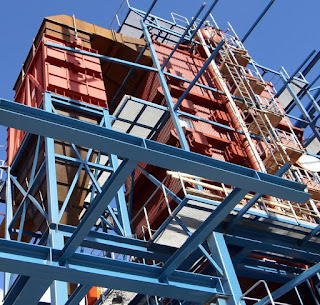 |
| Composite Materials for Industrial Construction. |
Typically, a composite material is made of reinforcement and a matrix. The reinforcement material provides the mechanical strength and transfers loads in the composite. The matrix binds and maintains the alignment or spacing of the reinforcement material and protects the reinforcement from abrasion or the environment. The combination of a matrix material with a strong reinforcement material enables lighter weight products relative to monolithic materials (like metals) with similar or better performance properties. Resin and fibers can be combined in a multitude of ways and further processed through a series of forming and consolidation steps. The specific manufacturing technique is dependent on the resin material, the shape and size of the component, and the structural properties required by the end use application.
The landscape of manufacturing segments and systems that benefit benefit from the lower cost, high strength and stiffness, corrosion resistant, and lightweight composite materials is growing. Successful industrial implementations for composites include material handling systems, compressed gas storage systems, heat exchangers, pipelines, geothermal energy equipment, turbine blades, structural materials for buildings, power generation flywheels, support structures for solar systems, and shipping containers, just to name a few.
For more information on applying composite materials for industrial construction or process equipment, contact Process Systems & Design at (410) 861-6437 or visit https://www.processsystemsdesign.com.
